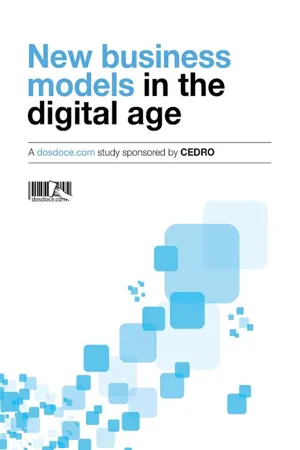
New Business Models in the Digital Age
- 74 pages
- English
- ePUB (mobile friendly)
- Available on iOS & Android
New Business Models in the Digital Age
About this book
Over the last several years, the Internet has transformed business models and the way companies in various sectors, like the media, airlines, tourism, financial intermediaries, etc., are organized. Every company that packages content and markets it through intermediaries will go through a change in its business model, and companies in the cultural sector will be no exception to this structural transformation process. A new era is fast approaching in which the way a business handles its relationship with consumers (B2C) will outweigh the current business-to-business (B2B) intermediation model.The objective of this study is to provide professionals in the book world, whether they are publishers, agents, authors, booksellers, or librarians, with a broad analysis of the business models currently available on the Internet so that they may determine where their business opportunities lie and what the benefits of each of these models are for their companies.
Frequently asked questions
- Essential is ideal for learners and professionals who enjoy exploring a wide range of subjects. Access the Essential Library with 800,000+ trusted titles and best-sellers across business, personal growth, and the humanities. Includes unlimited reading time and Standard Read Aloud voice.
- Complete: Perfect for advanced learners and researchers needing full, unrestricted access. Unlock 1.4M+ books across hundreds of subjects, including academic and specialized titles. The Complete Plan also includes advanced features like Premium Read Aloud and Research Assistant.
Please note we cannot support devices running on iOS 13 and Android 7 or earlier. Learn more about using the app.
Information
Table of contents
- Cover
- 0. Introduction
- 1. Digital Business Models
- 2. New Models:Somewhere Between Experimenting and Rationalization
- 3. The Current Situation.eCommerce and the Evolution of Paid Models
- 4. Conclusions
- 5. Acknowledgments / Authorship